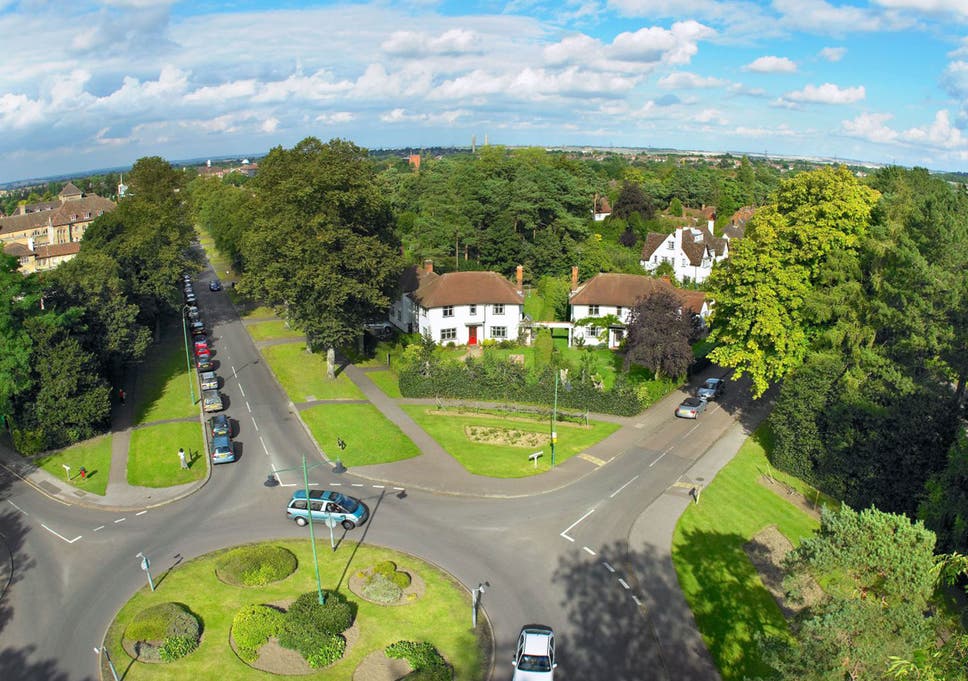For most city-dwellers, one of the great challenges they face is the high cost of living and housing expenses due to investor speculation. Some issues pertinent to the discipline of urban planning never seem to go away. For many decades since early planning pioneers sort mitigate the negative effects of urban living. Planners today continue to struggle with crucial tasks as reducing urban poverty, removing urban pollution and improving the health, safety, morals and welfare of the urban population. This has proven to be a momentous challenge as planners have found it difficult to garner the knowledge, community support and financial backing needed to tackle all these urban problems. Understandably, the planning community has questioned whether such tasks are feasible and have developed alternative models to the city life. Ebenezer Howard was once such critic.

Garden City Letchworth
The Industrial Revolution in the mid 1800’s led to uncontrolled growth and congestion due to overcrowding which caused deterioration to the cities. Migrants moved from rural areas and small towns became large cities. Industrial revolution stimulated more industries and the cities became dirty, bleak and more polluted. It was in response to the need for renewed urban life that Ebenezer Howard tackled this problem by proposing the idea of a “garden city” that would blend the benefits of both country and city living and be financed through collective ownership of land so as to give the working class an alternative to improve their working conditions. The central idea of Letchworth is to keep land ownership in the hands of the community while allowing housing and other buildings to be sold or leased to individuals. Howard’s concept of the garden city never took off large scale – it would have a garden in the center of the city, theaters, libraries, hospitals ad traffic would move along the edges.
Garden City Letchworth was started more than a century ago by ethical investors, Quakers and philanthropists and other socially concerned individuals. In 1903, founders Raymond Unwin and Barry Parker purchased 2,057 hectares of land near London at a reasonable price and then made it available to the members of the community for building. In this way, people came to own the roofs over their heads but co-owned the land on which their houses had been built. Despite low wages for many people, the community-oriented form of ownership made it possible to avoid high rents.
The collective ownership of the land also generated revenues through housing rentals and business leases. This in turn made it possible for the community to finance schools and hospitals. Everyone, not just investors, could benefit. Howard described his ideas in detail in his 1898 book Tomorrow: A Peaceful Path to Real Reform. For decades the economic value generated by Letchworth’s infrastructures – water, sewerage, gas, electricity, roads, schools, hospitals – were mutualized to benefit all of its inhabitants. This helped the city to become relatively self-sufficient. Inspired by the Letchworth example, other garden cities followed, such as the Welwyn Garden City in the 1920s.
At first, city officials resisted the idea of a neighborhood claiming a public space for itself by painting the pavement and creating small structures. But then they realized that the convivial neighborhood life at at Share-It Square was a great way for people to become more involved with city life. In 2000, the City of Portland passed an ordinance authorizing “intersection repair” throughout the city. With the help of City Repair volunteers, a neighborhood that obtains the consent of 80 percent of its residents within two blocks of an intersection, can design paintings and creative public spaces for the centers of the intersection.
Much of the inspiration for the City Repair Project has come from Mark Lakeman, the self-styled “placemaking coordinator” of the initiative. The group’s stated mission is to facilitate “artistic and ecologically oriented placemaking through projects that honor the interconnection of human communities and the natural world. We are an organized group action that educates and inspires communities and individuals to creatively transform the places where they live.”
In practice, this means everything from “intersection repairs” to public installations, block parties and conferences, and educational events and festivals. The commoning catalyzed by City Repair allows people to make decisions about their own immediate neighborhoods and to actively shape the future of the community. Sometimes that amounts to finding out the name of the neighbor who’s been living across the street for the past twenty years.
 Letchworth was the world’s first garden city ( Alamy )
Letchworth was the world’s first garden city ( Alamy )
Leave a comment